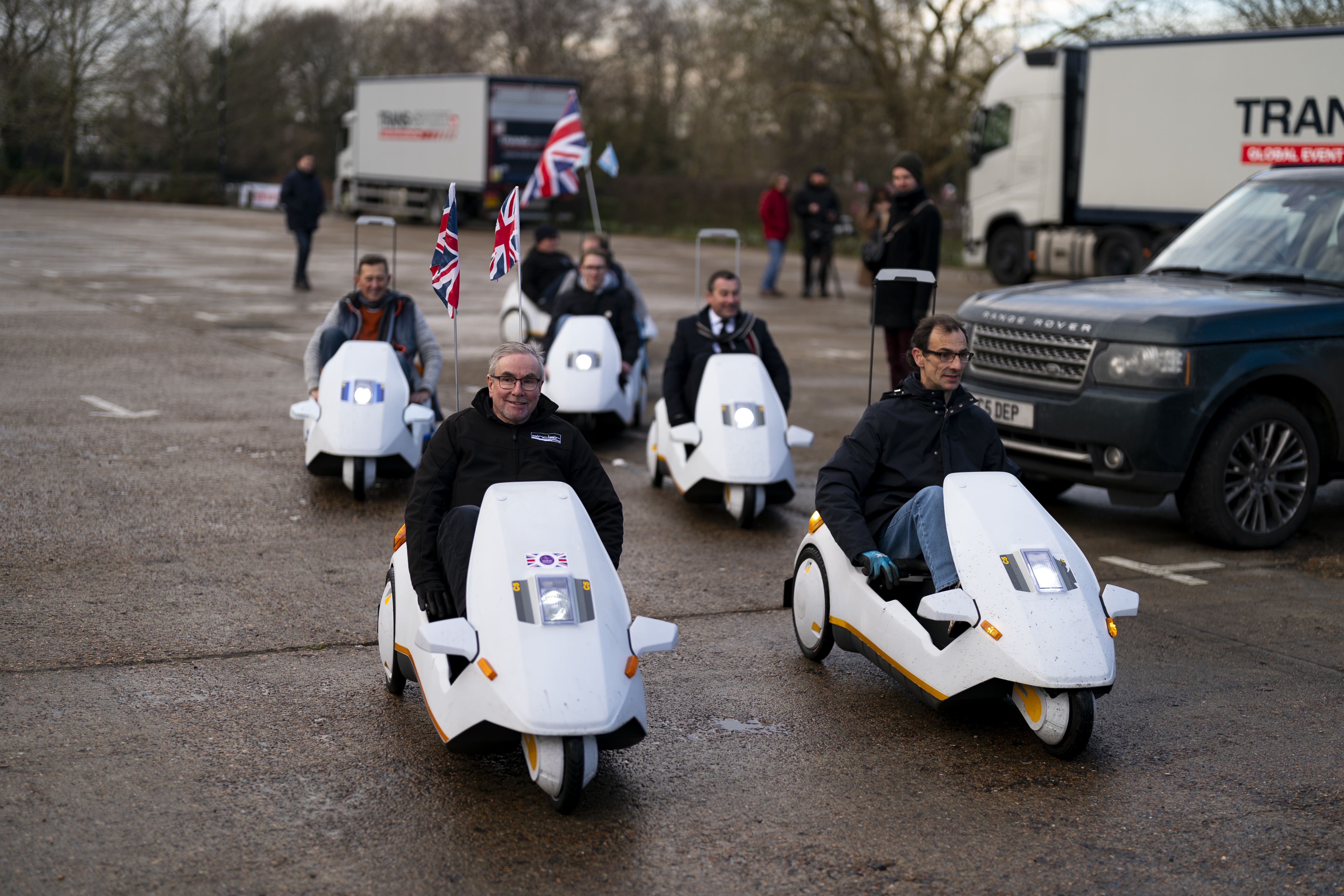Sinclair C5 fans gather to celebrate ‘iconic’ vehicle’s 40th anniversary
Fifteen of the vehicles were driven at Friday’s event at Alexandra Palace in north London.

Your support helps us to tell the story
From reproductive rights to climate change to Big Tech, The Independent is on the ground when the story is developing. Whether it's investigating the financials of Elon Musk's pro-Trump PAC or producing our latest documentary, 'The A Word', which shines a light on the American women fighting for reproductive rights, we know how important it is to parse out the facts from the messaging.
At such a critical moment in US history, we need reporters on the ground. Your donation allows us to keep sending journalists to speak to both sides of the story.
The Independent is trusted by Americans across the entire political spectrum. And unlike many other quality news outlets, we choose not to lock Americans out of our reporting and analysis with paywalls. We believe quality journalism should be available to everyone, paid for by those who can afford it.
Your support makes all the difference.Sinclair C5 enthusiasts hailed the vehicle as “ahead of its time” as they gathered to mark the 40th anniversary of its launch.
Fifteen of the vehicles were driven at Friday’s event at Alexandra Palace, north London, which was the location for the original unveiling on January 10 1985.
The C5 was the brainchild of multimillionaire English inventor Sir Clive Sinclair, who made his name creating the world’s first pocket calculator and pioneering the market for affordable home computers.
The three-wheeler is a low-set, one-person, battery-powered vehicle.
It was hailed by some as the future of eco-friendly transport, and despite being a commercial flop it gained cult status among collectors.
Bryan Griffin, who organised the gathering, told the PA news agency: “It was a true innovation of its era.
“It was ahead of its time. Now society is ready for sustainable personal electric vehicles.
“There’s warmth and nostalgia for Sir Clive and his innovations.”
Mr Griffin described the C5 as “an iconic ’80s vehicle”, stating that it was “really good fun to ride”.
He went on: “They’re really quite smooth.
“Lots of us use them for practical journeys. I take mine if I’ve got to pick up some shopping, or pick up a prescription.
“We use them for pub runs in the summer. We use them as much as we can.”
Another attendee, Gus Desbarats, who redesigned the C5’s bodywork for Sir Clive, said: “It’s endured.
“The design itself still looks futuristic and sort of right, 40 years on. I’m very proud of that.”
Mr Desbarats admitted “the configuration is all wrong”, as the position of the rider is “low and exposed”.
He added: “If Clive had done a moped, I think it would have probably hit its numbers.”
One news report at the time of the C5’s launch compared it to an “aerodynamic bathtub” and an “oversized electric skateboard”.
An initially flurry of interest meant the Hoover factory in Merthyr Tydfil, South Wales, where the tricycles were assembled, struggled to keep up.
The vehicle, with a top speed of 15mph, was priced at £399, a fraction of the cost of a conventional car.
But it soon became a commercial disaster, costing Sir Clive £7 million.
Demand dwindled and by September 1985 they were being sold off for as little as £139.
Around 12,000 eventually sold – far fewer than the 100,000 anticipated in the first year.
The vehicle’s body was made from a light-weight polypropylene shell on a chassis designed by sports car manufacturer Lotus.
The power comes from a battery providing a range of 10-12 miles before needing to be recharged.
The C5 took advantage of a law introduced in 1983 that meant it could be driven by anyone aged 14 upwards, without insurance, road tax or a crash helmet – even if they had been disqualified from driving a car.
In an interview to mark the 20th anniversary of the launch in 2005, Sir Clive insisted he had no regrets about the C5, stating that “we sold a lot of them and they weren’t unpopular with the customers”.
He also predicted that electric vehicles would “take over” as “fossil fuels are declining in availability”.
Sir Clive died in September 2021 at the age of 81.